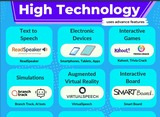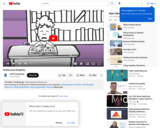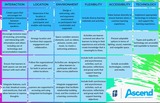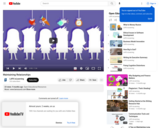
A vast range of technological tools available in education can be categorized as high and low technology.
- Subject:
- Education
- Material Type:
- Teaching/Learning Strategy
- Author:
- LAPU
- Date Added:
- 03/09/2023

A vast range of technological tools available in education can be categorized as high and low technology.

Learn about how the Four Domains of Boyer's Model of Scholarship. Learn how it is used to extend the understanding of Scholarship across disciplines and discover practical ways it can be applied.

Learn how you can engage a Subject Matter Expert (SME) in a project.

This is a promotional video for the Interview Like a Rockstar micro-course at Los Angeles Pacific University. Learn how to rock every interview with the different techniques and resources that we will provide you within this professional development course. Let's rock it!
Music: "Punky" from bensound.com

This video explains different human-computer interactions that can take place in learning. Instructional designers should be aware of such interactions when creating content.

Strategies to search for an instructional design job!

Learn more about citations in APA 7 format.Click on the link below to download our Citation Chart!LAPU's Writing Resource Hub: https://sites.google.com/lapu....

An organization’s culture includes the assumptions, symbols, organizational beliefs, routines, and shared language that influence how people behave and make sense of their experiences within the organization. The culture of an organization is linked to all facets of the people, processes, and technology that make up a functioning organization. Training and development is an important tool and helps to define organizational culture. The organizational knowledge base serves as a foundational resource for the entire training strategy as it allows the organization to be adaptable, responsive, and in alignment with the core values and mission. Knowledge creation enables the organization to refine and develop new content as well as find better, more effective ways to do tasks. Knowledge sharing refers to the social interactions between key stakeholders that allow for the transactional and transformation exchange of organizational experiences, implicit and explicit knowledge, thoughts, and suggestions. Knowledge storage enhances organizational memory and promotes access to and use of information for decision making. Learning and finding appropriate ways to use knowledge within our organizational roles for different activities and problem-solving situations is one of the primary goals of training and development areas. How we choose to train and develop team members will be heavily influenced by the organizational culture. Consider the following example.

Quick teaching tip: Working with intellectual disabilities in the classroom.
Created with Vyond.

After the interview is over, you should complete these steps to stand out in the interviewer's mind and to improve your own interviewing skills.
Music: "Energy" by BenSound.com

We provide you with some helpful communication tips in this video so that you will be prepared to interact with your interviewers.
Music: www.purple-planet.com

What are the first steps of obtaining an interview? This video provides some tips for beginning the interview process.
Music: "Funday" by BenSound.com

What can you do to prepare for an interview? This video provides tips to help you practice before your interview so that you are ready to rock it.
Music: "Energy" by BenSound.com

On the day of your interview, what should you wear, do, and bring? This video will provide some basic tips to help you seem polished and professional during your interview.
Music: "Happy Rock" by BenSound.com

This video explains the Kirkpatrick framework. Footage: pexels.com

Consider the six factors that contribute to a safe learning space: Interaction, Location, Environment, Flexibility, Accessibility, and Technology

One of the most important things a manager can do to improve overall performance is to improve and maintain employee relationships.
Music: www.bensound.com

Engage in various scenarios based on conflict management.

What is the role of an Instructional Designer?

Lear tips for personal branding and marketing!